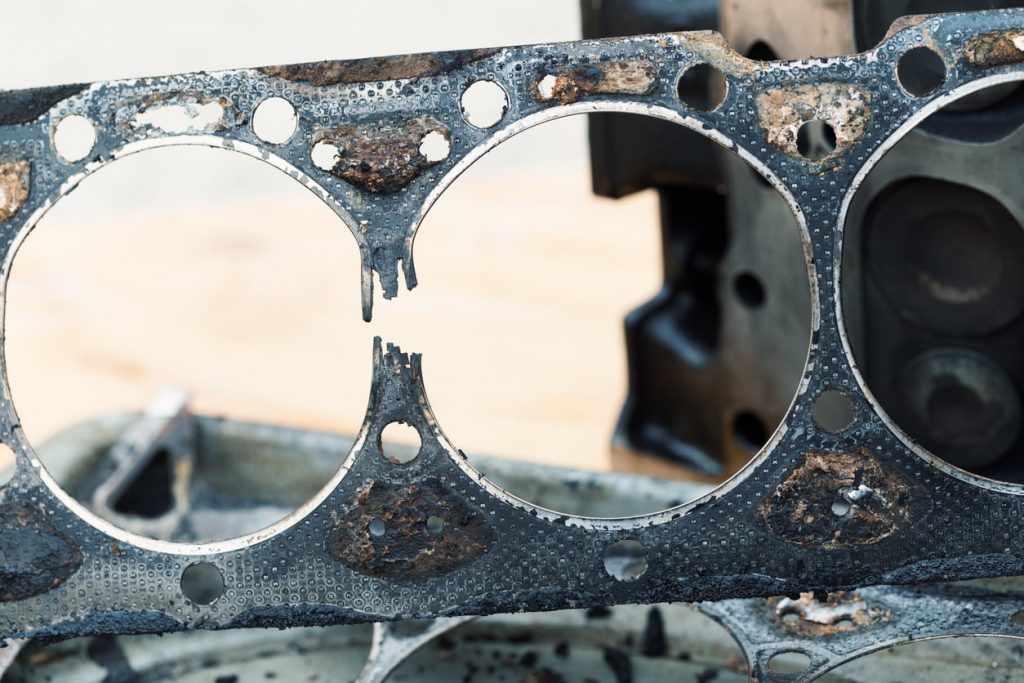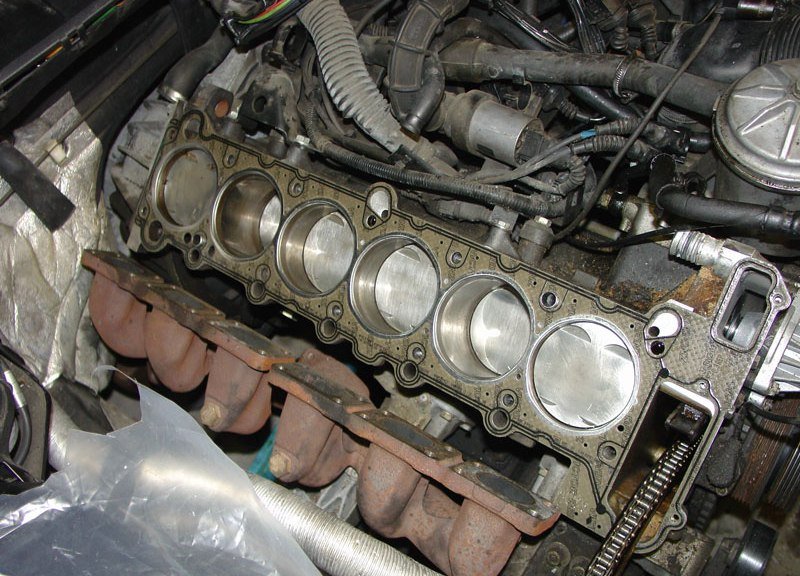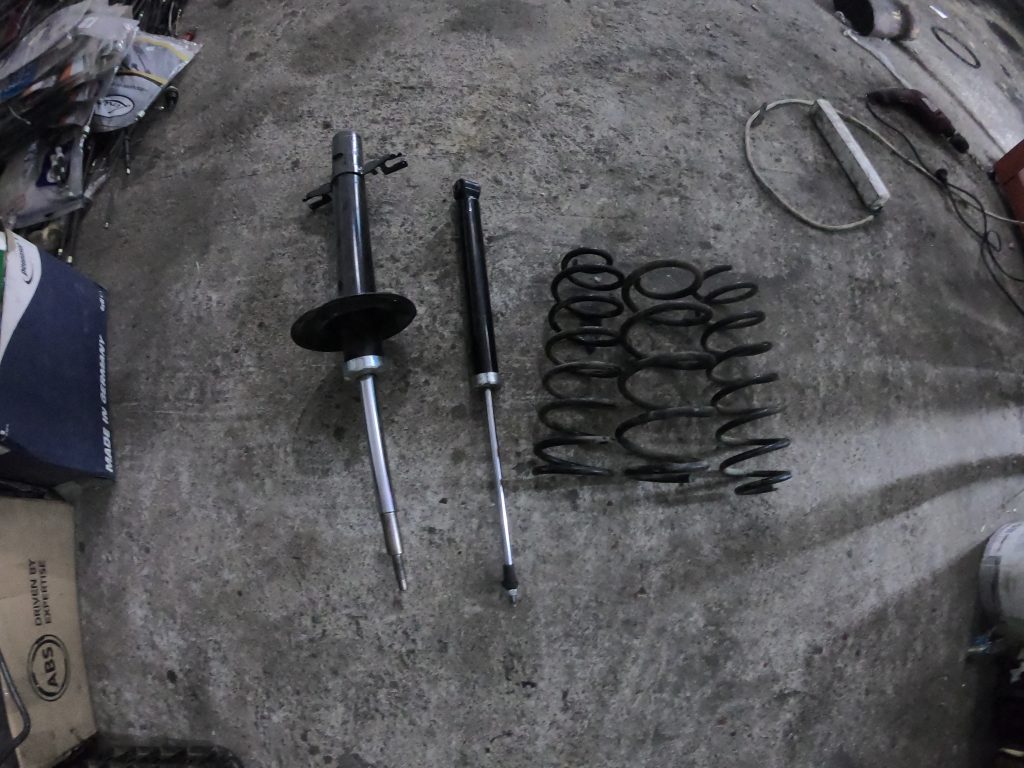Your car is not performing as it should. You are nervous for some time and suddenly you decide to visit your auto technician.
Out of nowhere, he diagnoses your problem, a “blown head gasket”.
But, you know it is a labor-intensive and costly repair that you cannot handle at this time.
Right now, you might ask yourself how long will a car last with a blown head gasket?
Well, a car with a blown head gasket will last no longer than a couple of weeks. It depends on how often you drive it and how big the leaks are. Generally speaking, it’s highly advised to park your vehicle immediately if you suspect that your head gasket has gone bad. At first, apply head gasket sealant, and if the leaks are just too big for it to work, replacement is a must.
Quick blown head gasket fix
If you are intimidated by the fact that another big expense came out of nowhere, well lucky for you, I have a relatively cheap solution for you.
Bar’s Leaks 1111 Block Seal Permanent Head Gasket Fix 24 oz.
Key features
- Stops block leaks
- Seals cracked cylinder heads and blocks
- Repairs blown head gaskets
- Contains a combination of antifreeze compatible sodium silicate sealing liquid and various size gasket sealing particles that penetrate gaps & cracks and harden to permanently stop leaks.
How to properly apply Bar’s Leaks to seal your blown head gasket?
A head gasket sealer functions when you put it into the radiator. You run the car for around 30 minutes, with the heating system and fan on high. After that the special chemicals in the sealant work via heat. Repeat the process about 4-5 times.
They’ll seek out and fit in fractures and gaps in the head gasket.
These sealers may not be one of the most long-term and might wear down in time. An actual repair is to change the head gasket, however, this is expensive.
Watch this awesome explanation and step-by-step guide of the whole process by Scotty, as he said in the video, “some head gasket holes are to big for any sealant to work but, in many cases it’s the best first option to consider”.
The amount of sealer you use depends upon how big your engine is. Cars with 8 or 10 cylindrical tubes will most likely require more sealer compared to those with 4 or six-cylinder.
What is a head gasket and its main purpose?
The head gasket in your car is located between your engine’s block and the cylinder head. Its task is to always keep compressed air and gas within the cylinder so they can be ignited and turned into energy. It also maintains coolant and oil out of the combustion chamber, so they do not foul the ignition procedure or cause your car to shed fluids.
How Long Will A Car Last With A Blown Head Gasket(In a situation where you actually have a blown head gasket)

Actually, it really depends on the car and the type of person driving it.
If you do not care about your vehicle, and you carelessly drive it even if you know that you have a faulty head gasket it might not last you more than a month.
But, keep in mind you are doing way more damage that will cost you later.
Symptoms of blown head gasket
- Overheating Engine
- Oil and Antifreeze Mixture
- White Smoke coming from the tailpipe
- Unexplained coolant loss with no leaks
- Bubbling in the radiator and coolant reservoir.
- Milky white coloration in the oil.

Since the cylinder head gasket additionally seals in the coolant and oil, you might see streaks of oil and coolant streaming down from the gasket.
You might likewise see a loss of engine power because of lower cylinder compression if the head gasket leakages to surrounding cylinders.
If you experience any one of these signs, the cooling system might be pressurized, shut the engine down, and don’t attempt to release the pressure.
What will happen if you drive with a blown head gasket?
- First of all, it can foul spark plugs and make your engine run badly because of the deposits left by burning coolant.
- Following, coolant in the combustion chamber can transform air gas ratios and trigger damages to sensors.
- The most dangerous for your engine, having actually coolant in the combustion chamber can create rusting of the piston, piston ring, and cylinder wall. Because of this, you might experience decrease compression that needs a complete engine rebuild.
- You might end up with coolant in your engine oil. Coolant in your engine oil creates significant issues as it considerably decreases your engine oil’s capability to lube essential parts of your engine, like your camshaft or crank bearings.
This absence of appropriate lubrication can rapidly result in bearing damage, once again needing an engine to reconstruct. Allowing engine oil leakage can rapidly reduce engine oil levels which will likewise lower lubrication in your engine and trigger the very same damage to bearings as well as camshafts.
- Finally, permitting gases to leak from your combustion chamber can cause abnormally high pressures in your cooling system and trouble in the metal around the leak. Leaking coolant and combustion gases can cause high-temperature gradients resulting in erosion of the leak location and possible splitting.
Sum it up
Every single vehicle is different and some may last longer than others with a blown head gasket, but one thing is clear; Make yourself a favor and do not drive your car with this problem at all!
I know that you need it, but think of the cost that you will pay afterward if you seriously damage the engine.
As matter of fact, I have given you an awesome temporary solution that you might find useful.
Still, this part has to be replaced one day.





